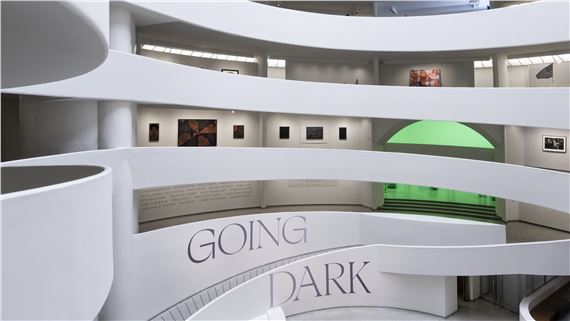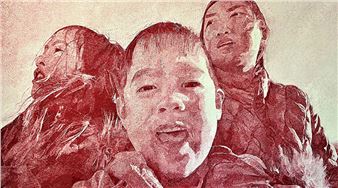Going Dark: The Contemporary Figure at the Edge of Visibility
Going Dark: The Contemporary Figure at the Edge of Visibility will present works of art that feature partially obscured or hidden figures, thus positioning them at the “edge of visibility.” In this art context, the common phrase going dark is understood as a tactic whereby artists visually conceal the body to explore a key tension in contemporary society: the desire to be seen and the desire to be hidden from sight.
Artists in the show articulate going dark by way of formal strategies that may include literal darkening methods like shadowing; rotating the body; novel materials and printing methods; and postproduction tools that blur or brighten. Some of the most recent works that will be on view draw upon digital technology, such as the chroma-key green (or blue) screen. These works move fluidly between figuration and abstraction, and many of the artists inventively manipulate color and light to also obscure optical perception, challenging the very biology of vision.
Occupying the Guggenheim Museum’s iconic rotunda, Going Dark presents more than 100 works by a group of 28 artists, the majority of whom are Black and more than half of whom are women. While most of the works date from the 1980s to the present, a selection of them were created in the 1960s and ’70s by three iconic artists—David Hammons, Faith Ringgold, and Charles White—suggesting that the development of Conceptual art during these decades launched new pathways of expression that laid the groundwork for contemporary artists tackling the “edge of visibility” today.

Recommended for you
Going Dark: The Contemporary Figure at the Edge of Visibility will present works of art that feature partially obscured or hidden figures, thus positioning them at the “edge of visibility.” In this art context, the common phrase going dark is understood as a tactic whereby artists visually conceal the body to explore a key tension in contemporary society: the desire to be seen and the desire to be hidden from sight.
Artists in the show articulate going dark by way of formal strategies that may include literal darkening methods like shadowing; rotating the body; novel materials and printing methods; and postproduction tools that blur or brighten. Some of the most recent works that will be on view draw upon digital technology, such as the chroma-key green (or blue) screen. These works move fluidly between figuration and abstraction, and many of the artists inventively manipulate color and light to also obscure optical perception, challenging the very biology of vision.
Occupying the Guggenheim Museum’s iconic rotunda, Going Dark presents more than 100 works by a group of 28 artists, the majority of whom are Black and more than half of whom are women. While most of the works date from the 1980s to the present, a selection of them were created in the 1960s and ’70s by three iconic artists—David Hammons, Faith Ringgold, and Charles White—suggesting that the development of Conceptual art during these decades launched new pathways of expression that laid the groundwork for contemporary artists tackling the “edge of visibility” today.
Contact details

Related articles
Going Dark: The Contemporary Figure at the Edge of Visibility is a major exhibition that brings together a multigenerational group of artists who engage the “semi-visible” figure—representations that are partially obscured, including, in some cases, literally darkened.
Across the nation, art exhibitions offer a look at the impact artists have on one another, their subjects and their communities.
The spirit of creative collaboration is on display in gallery and museum shows this fall and winter.
Your first encounter in the Guggenheim Museum’s ambitious new show, “Going Dark: The Contemporary Figure at the Edge of Visibility,” is likely to be with four looming figures draped in voluminous garments.

 ARTISTS
ARTISTS












